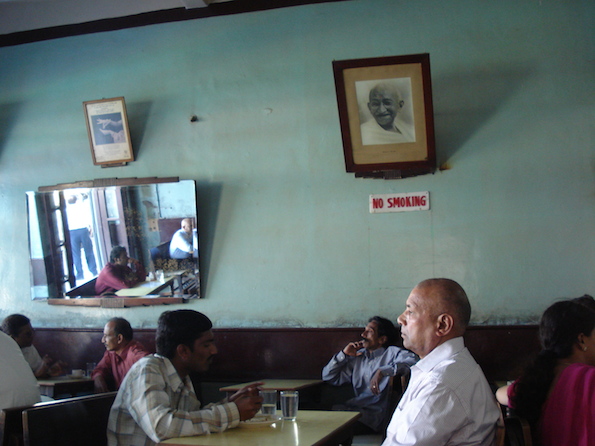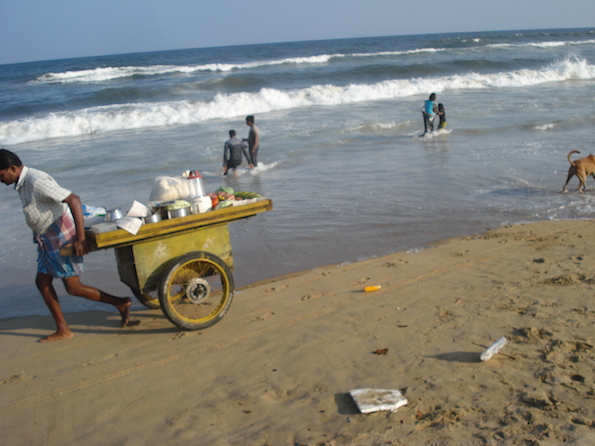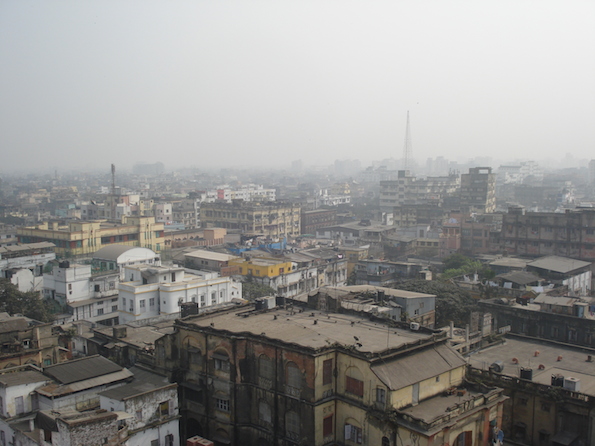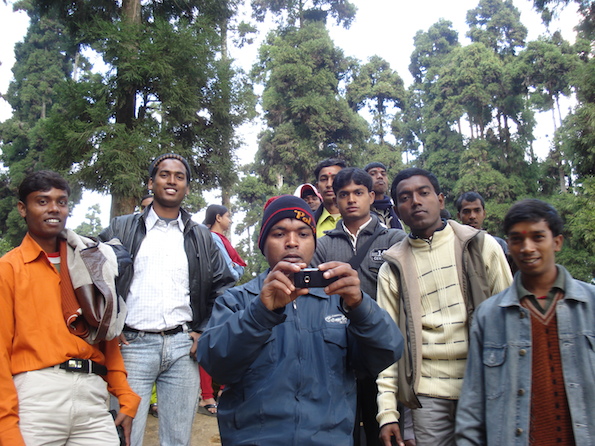Poetic tourism and deforming form.
by Andy Jackson
If one writes in free verse – and one should – to subvert Western civilisation, surely one should write in forms to save oneself from Western civilisation?
Agha Shahid Ali1
Agha Shahid Ali was born in Kashmir, and moved to the United States at the age of twenty-five. His poetry spanned this distance, and dwelt within both worlds equally comfortably. But he is most well-known as a contemporary master of the English-language ghazal. For many years, he had winced as other poets wrote what they called ghazals, with little apparent awareness of the rigour and complexity of the form.
First, to be teasingly petty, I offered the pronunciation: ghuzzle, the gh sounding like a cousin of the French r; the sound excavated near unnoticeably from deep in the throat. So, imagine me at a writers’ conference where a woman kept saying to me, “Oh, I just love guh-zaals, I’m gonna write a lot of g’zaaals”, and I said to her, in utter pain, “OH, PLEASE DON’T!”2
There is an immense allure to writing in a form which originated in another culture. It feels like unexplored territory, and the writer finds herself having to draw on parts of her self and life that she hadn’t before. Perhaps new things can be said, new textures of language, new ways of appearing and moving. Of course, the territory is other people’s land, their home, with all the detailed resonance that a tourist simply cannot see or appreciate. This is the other, often unconscious allure and danger of such “poetry-tourism”, the colonial appropriation of another’s living cultural artefacts.3
My new book, “Immune Systems”, contains a section of fourteen ghazals. Many conform carefully and entirely to each element of the ghazal form. Many others divert subtly from it, to various degrees. And a few are a long way from the traditional, with only a trace of the form perceptible. While writing it, and while travelling in India (where a lot of the “source material” for the ghazals were written), I was acutely aware of Agha Shahid Ali’s venom and rigour. I’m not going to try to declare myself innocent, or guilty. Instead, in this essay, I’m going to focus on what drew me to the form, and on why many of the ghazals which I wrote were “deformed”.
I first travelled to India in 2008. It was my first time outside of Australia as an adult. I landed in Kolkata, to orange-brown smog-light, a metallic taste in the air, propelled at great speed in an Ambassador taxi (for which I know I paid way too much) towards the centre of the city, the roads choked with a variety of machines and bodies, human, cow, goat and chicken, our vehicle glancing-almost-hitting skinny men on bicycles, an old woman tottering across the road. We would pause, not at traffic lights (why would you?), but when the road got too clogged, which became the opportunity for people to stare unashamedly through the taxi window at me.
Somehow, I slept through the humid night at the hostel, and woke to the call to prayer, ecstatic to have survived to encounter the pre-dawn calm, the sweeping of dusty footpaths, the crows pecking at mysterious crushed objects on the road, bodies beginning to stir from beneath sheets and newspapers. I was stunned, disoriented. My eyes could not make sense of Kolkata. But you have to leave your room and find breakfast, find water, enter the city.
 Ghazals have been written and performed at least as early as the seventh-century, mostly in Persian, Arabic and Urdu. One definition of the word “ghazal” is that it is the cry of the gazelle when it is cornered by a hunter, and knows it will die4. Perhaps the strongest thread that runs through its history is desire or longing – intoxicated, doomed and insistent. This desire is both spiritual and carnal – expressed with a fusion of urgency and control. “There is an epigrammatic terseness… but with immense lyricism, evocation, sorrow, heartbreak, wit.”5
Ghazals have been written and performed at least as early as the seventh-century, mostly in Persian, Arabic and Urdu. One definition of the word “ghazal” is that it is the cry of the gazelle when it is cornered by a hunter, and knows it will die4. Perhaps the strongest thread that runs through its history is desire or longing – intoxicated, doomed and insistent. This desire is both spiritual and carnal – expressed with a fusion of urgency and control. “There is an epigrammatic terseness… but with immense lyricism, evocation, sorrow, heartbreak, wit.”5
On the technical side of things, a ghazal is composed of a series of couplets. The first couplet sets up the rhythm and momentum – both lines end with a refrain, and a preceding rhyme. The second and all other couplets end in the same way, yet only on their second line. Each of these couplets, therefore, has a sense of anticipation and tension. Traditionally, there is no enjambment between couplets.6
As Agha Shahid Ali writes, each couplet is “autonomous, thematically and emotionally complete in itself. One couplet may be comic, another tragic, another romantic, another political.”7 Hence the title of the anthology he edited – “Ravishing DisUnities”. The unity of a ghazal, he argues, exists only because of its form and the cultural associations that have accrued to it. “Each couplet must be like a precious stone that can shine even when plucked from the necklace”8. There is, then, a thread, but it is invisible. Even a single ghazal can encompass great diversity – by its very nature, the form undercuts any idea of unity or completion. A little like this essay, perhaps.
“Ghazal of Mirrors” is mostly set in no particular place, though one couplet suggests the Western urban world. In terms of the requirements of the form, I was meticulously faithful. I wrote it, mostly, in Melbourne.
I run to the pillars of culture, from the dizziness of mirrors.
Will I ever find a clearing in this wilderness of mirrors?
I’ve yet to see myself in glass, just what I’m becoming.
An ever-flowing, churning stream, this distress of mirrors.
…
Our hardness is made of molecules and will. No, of course
you don’t believe the lies of politicians, of darkness, of mirrors.9
With “Ghazal of the body”10, written mostly in Kolkata, the form began to twist under the pressure of dislocation and bewilderment. I was determined to convey the ironies and pressures of the city, yet I couldn’t stop myself reaching for some kind of order, a place from which to judge it or myself. It began traditionally enough – “There’s no easy way of knowing if that man’s prone body / will ever move again. An answer stiffens in your own body.” Each subsequent couplet, though, replaced the rhyme and refrain with some body part – breast, skin, teeth, leg. It ends with “Hotel-room vigilance – clipping, washing, clearing away / the parasites, as if you could survive as one lone body”. The unseen thread of the ghazal, its order, was revealed to be our vulnerable, visible, common flesh.
Weeks into my travels, with the ghazal and with India, I was writing in fragments, discrete images and thoughts. Form began to feel absolutely arbitrary. A man with a more severe spinal deformity than mine begged on the footpath outside my hotel. There was no limit to the diversity of human expression, bodily shapes, suffering, persistence and reasonless happiness. I wrote what I thought I saw. “He pulls himself along on his hands, leg-stumps / cracked, fingernails painted in the colours of India’s flag”.
On my return home, I wrote “Ghazal of the Other”.11 I kept the rhyme throughout the ghazal, but the “refrain” was different each time. The first couplet sets up the expectation of “God” or “the Other”, while the rest of the poem returns with “desire”, “silence”, “the earth” and so on. The effect, at least for me, has “a feeling of probing questioning and syncopated puzzlement”12. While sincere, this ghazal also has a certain detachment or disillusionment, the kind that emerges after travel, where the familiar, home, has become strange.
 In an essay examining the adoption of the ghazal by various contemporary Australian poets, Ali Alizadeh writes, “Jackson’s poem prompts a non-spiritual and physical aesthetic of the ghazal – which we may now perceive as a feature of the Australian version of the poetic form – but his is perhaps the most directly corporal and material of these texts, as it invokes, in Butler’s terms, ‘a bodying forth’ of poetic construction”13. I was very encouraged to read this. I’ve always been interested in how poetry might illuminate how we experience embodiment – our own and others’. But there was something else going on, in terms of bodies. I happened to read Alizadeh’s essay around the time I was putting my ghazals together for “Immune Systems”, and something about spending concentrated time with them as physical objects arranged on pages allowed another layer of meaning to emerge. The ghazals appeared to be bodies themselves.
In an essay examining the adoption of the ghazal by various contemporary Australian poets, Ali Alizadeh writes, “Jackson’s poem prompts a non-spiritual and physical aesthetic of the ghazal – which we may now perceive as a feature of the Australian version of the poetic form – but his is perhaps the most directly corporal and material of these texts, as it invokes, in Butler’s terms, ‘a bodying forth’ of poetic construction”13. I was very encouraged to read this. I’ve always been interested in how poetry might illuminate how we experience embodiment – our own and others’. But there was something else going on, in terms of bodies. I happened to read Alizadeh’s essay around the time I was putting my ghazals together for “Immune Systems”, and something about spending concentrated time with them as physical objects arranged on pages allowed another layer of meaning to emerge. The ghazals appeared to be bodies themselves.
I’ve suggested elsewhere that we encounter poems as physical objects, textual bodies which have their own particular shape and energy, as a result of the subjectivity embedded in them14. Each poem is a mix of order and chaos, of expectation and surprise. On the page, and as sound, poems are instances of particularity, where precise detail catches our attention and where form refers back to cultural norms. And, in my experience, the ghazal is a particularly heightened example of this. There is a “normal” ghazal, just as we have a certain image of a “normal body”, and it is in the ways in which we depart from this norm that intrigue and frisson occurs. Of course, relatively normal bodies and formal ghazals, too, have their own undeniable, disruptive energies.
And while I was writing ghazals, I often found that I was not in complete control. The process was undeniably collaborative. The form imposed its own demands, in terms of sound, rhythm and line-length, but even in terms of emotional and philosophical tone. I had to meet the ghazal half-way. Or perhaps it had to meet me. I’m still not sure. But I think as writers – as people, as bodies – this uncertainty and community is exactly what we desire. It may not save us from Western civilisation, but it’s a start.
Next week, poetic influence – or, how did I get here?
Note – “Immune Systems” will be launched by Luke Beesley on Tuesday March 17, 6pm, at Collected Works Bookstore, Nicholas Building, 1/37 Swanston St, Melbourne. After the launch, the book will be available through Transit Lounge and at independent bookstores.
_________________________
1 Agha, Shahid Ali, ed. Ravishing DisUnities: Real Ghazals in English, Middletown USA : Wesleyan University Press, 2000. Print. p.13.
2 Agha, Shahid Ali, p.1.
3 Alizadeh, Ali. “Sufis of the Antipodes: the ghazal in contemporary Australian poetry”. The LaTrobe Journal: Persian Cultural Crossroads. Ed. Susan Scollay. 91. June (2013): 140-8. Print.
4 Agha, Shahid Ali, p.3.
5 Agha, Shahid Ali, p.183. See also Kugle, Scott. “Qawwali between written poem and song lyric. Or, how a ghazal lives”. The Muslim World 97.4 (2007): p.571-610. Print.
6 The final couplet also usually includes the author’s name. I never did this, though I often referred to myself in some oblique and impersonal way – eg “this poet”.
7 Agha, Shahid Ali, p.2.
8 Agha, Shahid Ali, p.2-3, 183.
9 Jackson, Andy. “Ghazal of mirrors”. The Ghazal Page December 2009. Web. 11 March 2015. www.ghazalpage.net/2009/2009_december.html#mirrors
10 Jackson, Andy. “Ghazal of the body”. Heat. 22 (2010): p.134. Print.
11 Jackson, Andy. “Ghazal of the Other”. The Ghazal Page December 2009. Web. 11 March 2015. www.ghazalpage.net/2009/2009_december.html#other
12 Kugle, np.
13 Alizadeh, p.147.
14 Jackson, Andy. “Free-Verse Bodies: Or, is Poetry Deformed?”. Meanjin Blog 12 November 2014. Web. 11 March 2015. http://meanjin.com.au/blog/post/free-verse-bodies-or-is-poetry-deformed/



1 thought on “Poetic tourism and deforming form.”
Comments are closed.